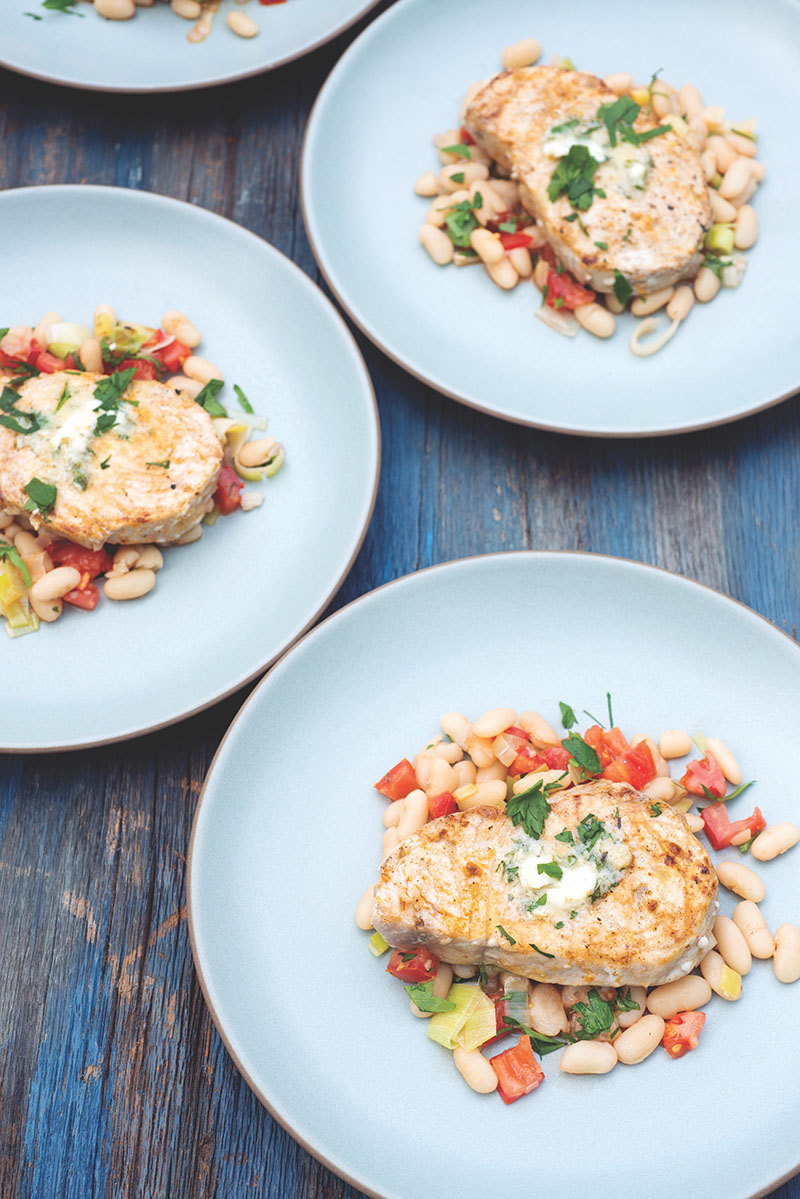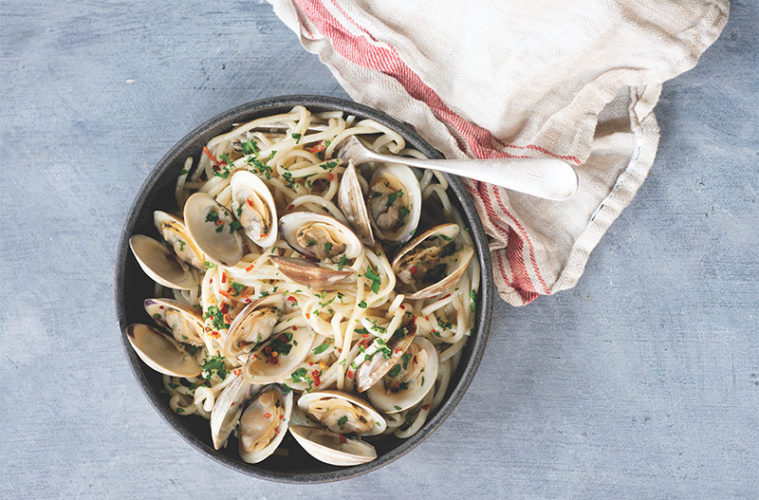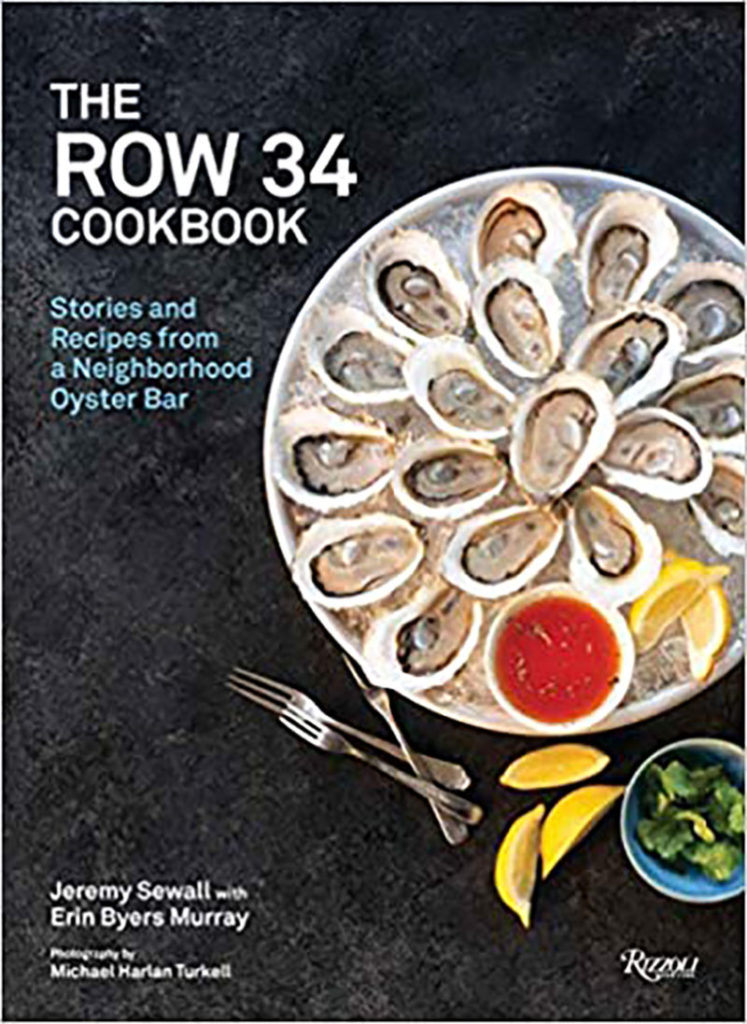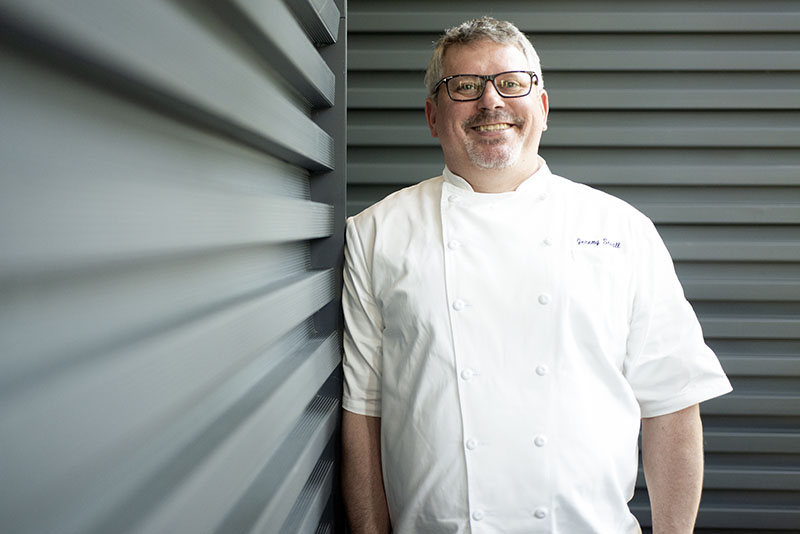Chef Jeremy Sewall wants you to cook more fish. For years, he’s made seafood more approachable at his casual, comfortable Row 34 mini-chain of restaurants, channeling an old-school New England vibe with letterboard signs and dishes that are an homage to summers growing up in Maine.
Now he wants to help you have the same experiences in your own kitchen. “There are all these hurdles, whether they’re real or imagined, to people cooking seafood at home,” Sewall says. “I think, if you could just help people find those two or three dishes that they’re comfortable with, they’ll realize, ‘I can do this.’ Then they’ll take that next step and the next step...”
Sewall’s new cookbook aims to do just that, guiding home cooks through everything from the basics of buying fish to home smoking. Named after his restaurants, The Row 34 Cookbook is equal parts approachable recipes and friendly tips, sprinkled with stories from his employees and suppliers sharing their love of all things seafood. The reassuring, conversational style is like having the chef sitting next to you as you try shucking an oyster or making clams and pasta– he anticipates a lot of the questions you might have and demystifies seafood along the way.


Chef Sewall
Fans of Row 34 will find recipes for favorite dishes like Butterscotch Pudding and Ethel’s Classic Lobster rolls, a recipe from Sewall’s grandmother. And also some instant weeknight classics, like the Bucatini with Littlenecks, a simple-yet-delicious dish that comes together in the time it takes to make the pasta.
With that recipe, as with the others in the book, Sewall advises considering the ingredients more as guidelines than as rules. While the clam recipe calls for littlenecks and bucatini, for example, you could do it with mussels or shrimp and any kind of fresh or dried pasta.
“The food police aren’t showing up if you use shrimp instead of clams,” Sewall says with a laugh. “You’re not going to get in trouble. Take bits of different recipes and make them your own.”
Sewall grew up feasting on fresh seafood—his grandfather was one of the first lobstermen in York Harbor, Maine, and myriad relatives followed in his footsteps. For a time, Sewall even thought that he would take up lobstering himself. “I spent my summers lobstering, and it’s kind of fun. You can stop to go fishing, you’d end up with a couple of bucks in your pocket and you’d be really strong at the end of the summer,” the chef recalls, saying he even told his dad he wanted to move to Maine from his home in Upstate New York and become a lobsterman.

Then, on winter break from high school, he went lobstering with his cousin Mark Sewall. “I was cured,” the chef says with a laugh. “It was hard, and days were long and cold.” Instead, he headed to culinary school, but has never given up his respect for the men and women who supply his restaurants. “I try to use the local guys as much as I can” – with his cousin Mark, who supplies lobsters to Sewall’s restaurants, at the top of the list.
That’s not to say the chef eschews the open water—he often takes his staff out fishing for a day—something that’s as thrilling for him as it is for his often-newbie fishing companions.
“There’s something a little bit romantic about fish—it is one of the only wild foods we eat,” Sewall says. “Nobody eats wild cow or wild chicken, but fish is wild-harvested and people make a living catching it.”
While seafood can be intimidating, Sewall says if you buy from a reputable source, and get a good nonstick pan and a fish spatula, you’re ready to tackle most of the recipes in his book. And remember, cooking seafood is a skill that requires practice. “Don’t be afraid to screw up,” he says. “What’s the worst thing that’s going to happen? Just put some extra lemon on and eat it.”
Bucatini with Littlenecks
from The Row 34 Cookbook by Jeremy Sewall with Erin Byers Murray
Serves 4 as an entrée
Ingredients
2 tablespoons kosher salt, plus more to taste
24 Littleneck clams, cleaned
1 cup dry white wine
2 bay leaves
2 sprigs thyme
1 pound bucatini or other long pasta
3 tablespoons extra-virgin olive oil
1 shallot, minced
3 garlic cloves, minced
3 tablespoons unsalted butter
Freshly ground black pepper
1 tablespoon freshly squeezed lemon juice
¼ cup roughly chopped flat-leaf parsley leaves
1 teaspoon red pepper flakes
Directions
1. In a large stockpot, bring one gallon of water and the salt to a boil. This salty water will be used to cook the pasta and should be ready to go before you start cooking the clams, especially if you are using fresh pasta, which takes only a few minutes to cook.
2. Place the clams, wine, bay leaves, and thyme in a medium saucepan or Dutch oven that has a tight-fitting lid. Bring to a boil and then reduce to a simmer. Cover and simmer until all the clams open. Discard any closed clam shells.
3. Use a slotted spoon to remove each clam from the pan as it opens, transferring them to a large bowl. After removing all the clams, remove the pan from the heat and let the liquid cool a little. Carefully pour the liquid slowly into another bowl or container, letting any sand that may have come out of the clams while cooking stay in the bottom of the pan. Discard the thyme and bay leaves.
4. In a large sauté pan, heat the olive oil over medium heat and add the shallot and garlic. Sauté until they just begin to color; add the reserved clam cooking liquid and bring to a boil. Stir in the butter until it melts and quickly add the pasta and clams, tossing gently to combine. Season with salt and pepper and stir in the lemon juice.
5. Place the pasta and clams in a large serving bowl, pulling a few clams out to arrange on top. Garnish with parsley and red pepper flakes.



